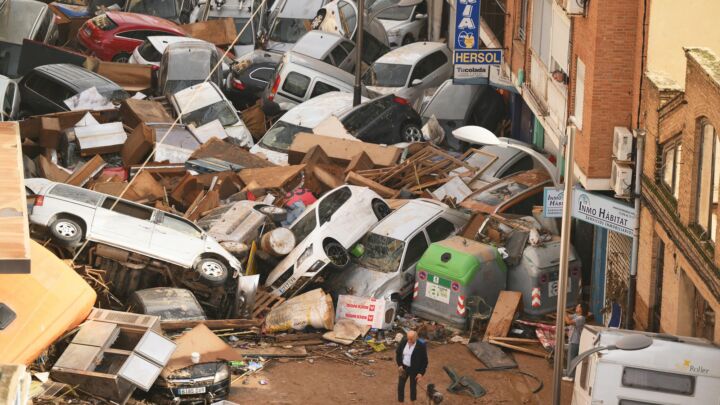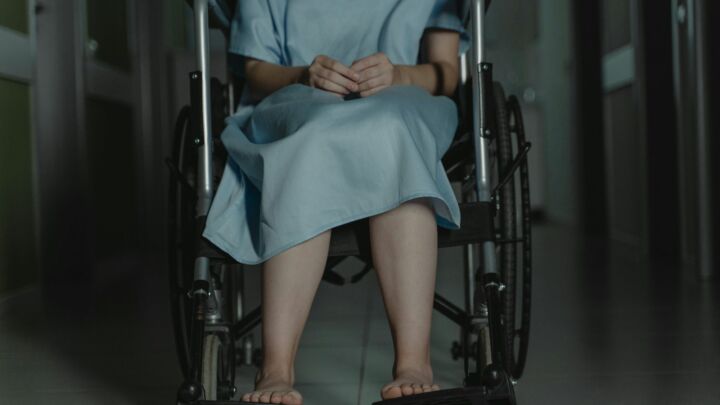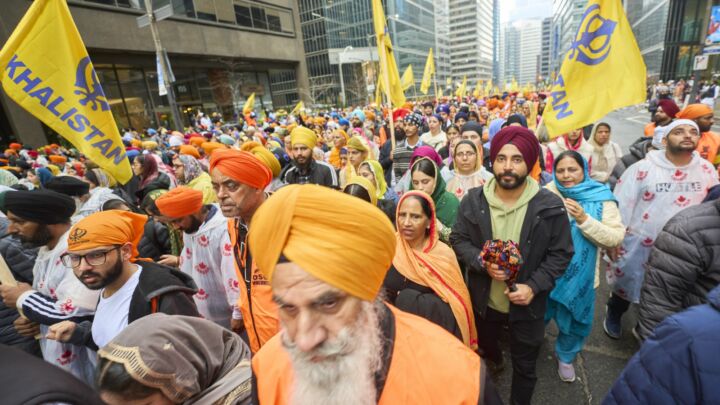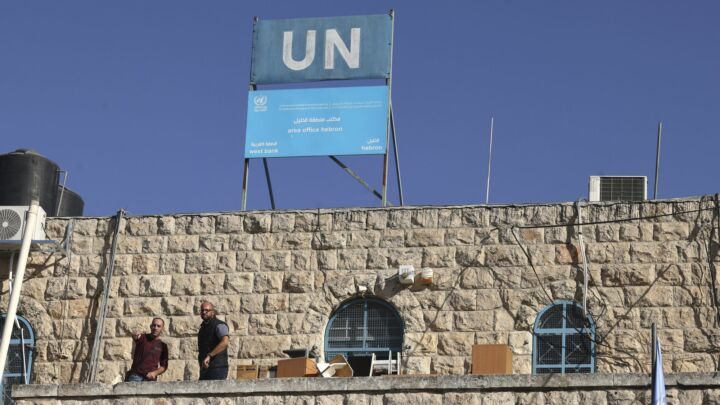The danger of reporters becoming ‘crusaders’
The death of courageous war reporter Marie Colvin in Syria was a tragedy – but not a justification for further Western intervention.

Want to read spiked ad-free? Become a spiked supporter.
The death of veteran war reporter Marie Colvin, killed last week along with a French photojournalist by Syrian government forces shelling in the besieged city of Homs, was a tragedy. It was a terrible loss to the world of war reporting and to her many friends and admirers. It was also, as many commented, a reminder of the risk-taking and courage involved in reporting from the frontline.
One thing Marie Colvin’s death was not, however, was a casus belli – a justification for war. Yet much of the angry reaction to her killing suggested that this was somehow the final straw, proof that the ‘international community’ must now take firm action against Syria’s dictator, Bashar al-Assad. ‘That’s enough now’, France’s president Nicolas Sarkozy said on being told of the deaths of the New York-born reporter and her French colleague Remi Ochlik; ‘the regime must go’. Media comment, especially from Colvin’s friends, went further down that road. One senior foreign editor spoke for many when he declared that ‘Assad must pay for Marie Colvin’s murder’.
To suggest that the death of a journalist, however well-liked and respected, should somehow alter the debate about a major issue such as Western intervention in Syria seems to stretch the belief that ‘the personal is political’ beyond reason. When former US president George W Bush argued that war with Iraq would be justified because Saddam Hussein had once ‘tried to kill my dad’, he was rightly ridiculed. Over the past week, some who criticised Bush and his intervention against Saddam’s Iraq have been calling for intervention in Assad’s Syria in similarly personalised terms.
This is an example of how the debate about Syria in the West is being shaped more by emotional reactions than by rational analysis. As Brendan O’Neill has noted on spiked, when it comes to Syria Western governments have largely abandoned proper geopolitics in favour of striking moralistic postures (see Let’s veto the West’s moral posturing on Syria). Meanwhile, the Western media focuses on the bloodshed caused by Assad’s crackdown on rebels in a city such as Homs, and repeats the familiar indignant cry that ‘something must be done’. The difficult question of what exactly that ‘something’ might be, and the more difficult question of what effect any increased intervention will have on the civil war, are shouted down in the emotional clamour for more action.
I did not know Marie Colvin. But to judge by her writing, it seems likely that, while the reporter may not have been comfortable with finding herself at the centre of the story, she would have approved of the way that the recent bloodshed in Homs is being used to demand further intervention. Writing for The Sunday Times (London) and sometimes broadcasting for the BBC, Marie Colvin was to the fore in a new school of war reporting that has developed in recent years, notably in the UK media. It is a fashionable current of war reporting with which some of us at spiked have often clashed.
Sometimes referred to by Americans as ‘I-was-there’ reporting, this school of journalism emphasises the role of the reporter as eyewitness to the horrors of war. It focuses less on the political causes and military strategies of war, and more on the human cost of conflict in terms of civilian suffering. Marie Colvin was a pioneer of this type of war reporting. As she explained in November 2010, speaking at a service to commemorate war reporters who had died in the previous decade, while the ‘sanitised’ language with which governments justify wars might change, ‘the scene on the ground has remained remarkably the same for hundreds of years. Craters. Burned houses. Mutilated bodies. Women weeping for children and husbands. Men for their wives, mothers [for their] children. Our mission is to report these horrors of war with accuracy and without prejudice.’
Focusing on mutilated bodies and weeping women and men, this school of war reporting tends to cast conflicts in simple moral terms of victims and aggressors. It uses undoubtedly emotive images and reports to demand that something must be done, that the international community – meaning the West – must intervene in conflicts around the world. The journalists involved can sound less like objective reporters than crusaders on a personal mission.
Colvin was praised as ‘a crusader’ by her editor. In her last despatches from Homs before her death, she called desperately for more intervention to defend the civilian population: ‘In Baba Amr. Sickening, cannot understand how the world can stand by. Watched a baby die today. Shrapnel, doctors could do nothing. His little tummy just heaved and heaved until he stopped. Feeling helpless.’ Those of us who try to argue that more Western intervention can only exacerbate the crisis in Syria are confronted with the counter-argument of dead babies.
The debate about this current in war reporting really took off in the 1990s around the wars in Bosnia and elsewhere in the Former Yugoslavia. Martin Bell of the BBC argued that Bosnia had shown the need for a new ‘journalism of attachment’, a sort of war reporting ‘that cares as well as knows’. During the Balkan conflicts, leading Western correspondents became ‘laptop bombardiers’, leading calls for more military intervention against the Serbs.
A few years ago this sort of reporting was still being seriously questioned by more old-school writers and editors, notably in the US media. For example, in an April 2000 article about Marie Colvin published in the American Journalism Review, a foreign editor from the New York Times spoke about the importance of ‘keeping emotions and judgements in check’ among his reporters: ‘We are not referees in the conflicts of the world… Advocacy journalism, in our eyes, is always suspect.’
Today, however, it seems that, while almost nobody would endorse the phrase ‘journalism of attachment’, that approach to war reporting has triumphed over the traditionalists. Bell himself wrote last week that ‘the targeted killing’ of Marie Colvin confirmed that ‘bystander journalism is now a thing of the past. Journalists are not the main players but are important in any conflict.’ He argued that ‘the more we see and read about innocent civilians being caught in the crossfire, the harder it is for [Western] governments to remain inactive and indifferent’. Bell was clear that it was the reporters who transmitted ‘a sense of imminent catastrophe’ in Libya last year who had paved the way for the Anglo-French aerial war of intervention there. Now other reporters are taking up Colvin’s cause and demanding more intervention in Syria.
Some of us have taken issue with these developments in war reporting from the start. In 1997 I wrote a pamphlet entitled Whose War Is It Anyway? The Dangers of the Journalism of Attachment. There is no space here to rehearse all the arguments about objectivity and emotionalism. But one point worth repeating concerns the danger of reducing complex conflicts to simple moral issues, by focusing on the suffering of civilians removed from any wider political context. As Marie Colvin said, the tales of carnage and suffering ‘on the ground’ do not change much from one war to the next. But what can that tell us about the specific causes and consequences of that conflict, or what the solution might be? It can only end in another demand for something-must-be-done intervention. The hard truth is that, from Bosnia onwards, Western intervention has been a disaster for those on the receiving end. Yet it is still offered as the only solution for those facing repression at the hands of despotic regimes in Libya and now Syria.
There is an irony in the way that some reporters who insist the news should focus on civilian suffering often seem to find themselves at the centre of the story. As one injured French journalist in Homs told the world last week, ‘I need a ceasefire’. It seems that the question ‘whose war is it anyway?’ is still worth asking. Discussing the inherent dangers of the I-was-there school in that AJR article from 2000, Marie Colvin noted that ‘it is easy to go over the top’. Some younger reporters might do well to heed her advice.
Since her tragic death, Marie Colvin has been widely praised as an example of the public good that journalists can do, a world removed from the allegations of sleaze and crime around the phone-hacking scandal and the Leveson Inquiry. Those like Colvin who fearlessly report what they witness are indeed crucial to making the news and informing the world. When reporters become crusaders, however, it is not good news for journalism or for political debate.
Mick Hume is editor-at-large of spiked.
Celebrate 25 years of spiked!
A media ecosystem dominated by a handful of billionaire owners, bad actors spreading disinformation online and the rich and powerful trying to stop us publishing stories. But we have you on our side. help to fund our journalism and those who choose All-access digital enjoy exclusive extras:
- Unlimited articles in our app and ad-free reading on all devices
- Exclusive newsletter and far fewer asks for support
- Full access to the Guardian Feast app
If you can, please support us on a monthly basis and make a big impact in support of open, independent journalism. Thank you.







Comments
Want to join the conversation?
Only spiked supporters and patrons, who donate regularly to us, can comment on our articles.